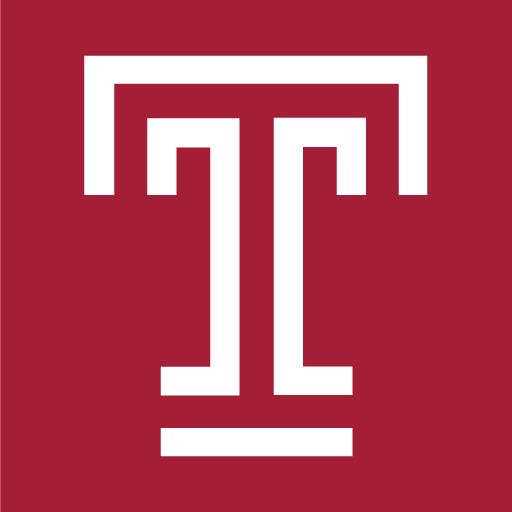CIS Colloquium, Oct 08, 2008, 03:00PM – 04:00PM, Wachman 447
When Right Is Wrong: An fMRI Study of Overt Picture Naming in Patients with Language Impairment Due to Stroke
Dr. Whitney Anne Postman-Caucheteux, Eleanor M. Saffran Center for Cognitive Neuroscience, Temple University
Aphasia is language impairment due to brain damage usually affecting the left hemisphere, especially the left perisylvian cortex. Patients with aphasia due to stroke can achieve varying degrees of language recovery, yet the neural mechanisms underlying recovery are poorly understood. While some neuroimaging studies with aphasic patients have found that right hemisphere (contralesional) regions are associated with performance of language tasks, others have correlated the best recovery with restoration of activation in the left-sided areas surrounding the lesion (perilesional). The results from previous research remain inconclusive because until now, it has been impossible to compare patients’ accurate to inaccurate responses within a single scan session by tracking their performance during data acquisition on a trial-by-trial basis.
In this fMRI study using BOLD imaging on a 3-Tesla scanner, this problem was overcome by implementing an event-related design that permitted distinction between brief task-induced motion and hemodynamic lag (Birn et al., 2004). Participants were 3 native English speakers (selected from a larger cohort) aged 48 to 68 years, with left hemisphere damage due to left middle cerebral artery infarction suffered at least 3 years prior to testing, all with moderate language production impairment but good comprehension. Four age-matched control subjects also participated. During 8 functional runs each of 4 minutes 30 seconds duration, subjects were presented with 144 object drawings projected onto a screen one by one at 4 to 8 second jittered intervals, which they named without delay. Their responses were recorded and filtered through a dual-channel fiber-optic microphone. Acquired echoplanar images comprised 23 axial slices of 6mm thickness with no gap. Repetition time (TR) was 2 seconds per volume.
Voice recordings revealed that the patients performed the task with relative success, achieving 53% to 75% correct responses. Analysis of the functional images with AFNI (Cox 1996), registered to the structural images of each patient’s brain, revealed that while both correct and incorrect responses were associated with perilesional activation, incorrect responses were consistently associated with greater activity in right hemisphere regions, specifically in frontal, temporal and parietal areas homologous to left hemisphere language areas. Most notably, incorrect responses elicited activation in the right inferior frontal gyrus that was not observed either for patients’ correct responses or controls’ responses.
In addition, their predominantly semantic and omission errors were induced by pictures with higher numbers of alternative names and late-acquired names. Using Amplitude Modulated Regression in AFNI (http://afni.nimh.nih.gov/), these variables were linked to greater activation in left and right IFG in patients as well as control subjects. These results demonstrate the feasibility of measuring neural activation for accurate and inaccurate language production during a scan session, the clinical utility of which is clear for monitoring aphasia recovery longitudinally. They support the hypothesis that contralesional (right-hemisphere) activation need not be interpreted as a compensatory mechanism for effective recovery of language, but instead may represent maladaptive effort recruited when left perilesional areas are insufficient.
Bio:
EDUCATION
2008-10 Program in Speech-Language Pathology, TEMPLE UNIVERSITY
2002 Ph.D., Linguistics with Minors in Cognitive Studies and Southeast Asian Studies, CORNELL UNIVERSITY
1992 B.Sc., Linguistics and Philosophy with Minor in Art and Architecture History, MASSACHUSETTS INSTITUTE OF TECHNOLOGY
RECENT & CURRENT RESEARCH
2007-2008 ELEANOR M. SAFFRAN CENTER FOR COGNITIVE NEUROSCIENCE, TEMPLE UNIVERSITY
Visiting Research Scholar with Dr. Gerry Stefanatos and Dr. Nadine Martin.
Investigating pharmacological and behavioral rehabilitation of language and short-term memory deficits with patients with aphasia.
2004-2007 NATIONAL INSTITUTE ON DEAFNESS AND OTHER COMMUNICATION DISORDERS NIH Postdoctoral Intramural Research Training Award with Dr. Allen Braun, to investigate recovery and brain reorganization in people with aphasia secondary to stroke using behavioral and neuroimaging (fMRI and MEG) experimentation. My fMRI study of patients in chronic stages of aphasia won the NIH Fellows Award for Research Excellence 2007 competition. Other projects with healthy subjects include a longitudinal fMRI study of word production, a pilot fMRI study of Spanish-English bilingual word production, and analysis of PET images acquired during spontaneous narrative production.
